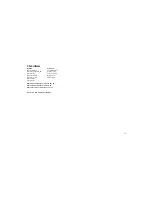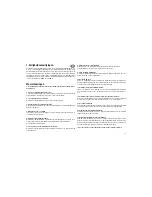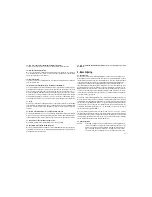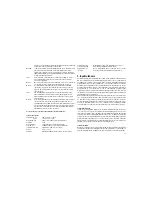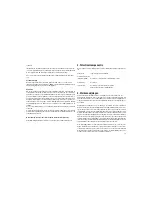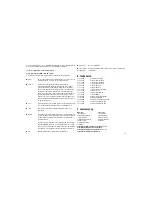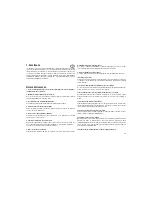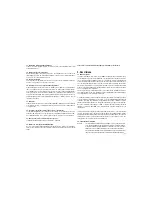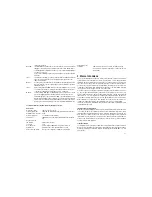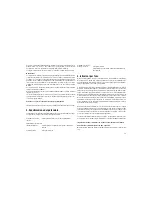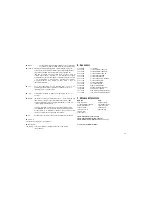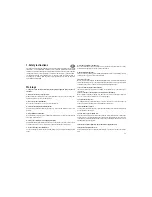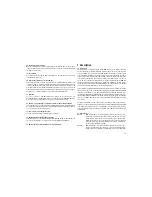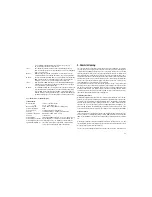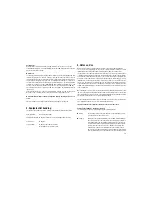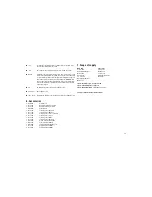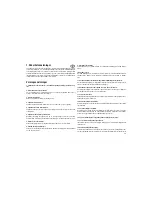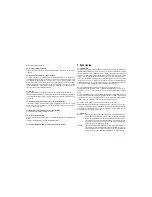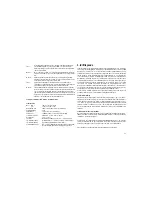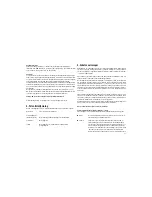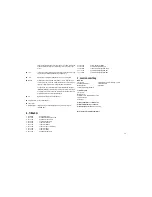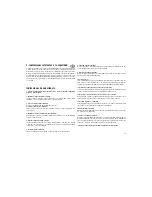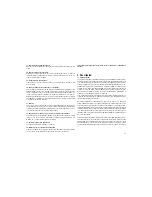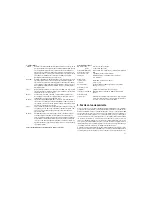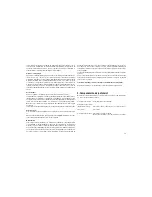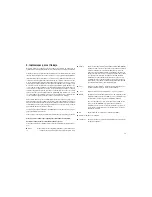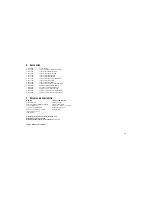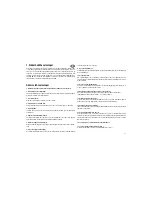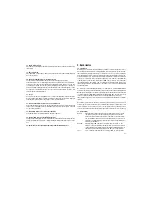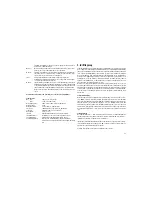
5. Notes on Use
Different suction nozzles provide solutions for a wide range of desoldering problems.
The correct tool for changing the suction nozzles is integrated in the cleaning tool. Press
lightly against the heating element when inserting and locking the suction nozzles.
It is important to use additional solder when desoldering. This ensures good suction nozz-
le wetting properties and improves the flow characteristics of the old solder. Ensure that the
suction nozzle is perpendicular to the plane of the circuit board to achieve optimal suction
performance. The solder must be completely molten. During the desoldering process it is
important to move the component pin in a circular motion in the hole. If, after the desolde-
ring process, the solder is not completely removed, the solder joint should be retinned befo-
re desoldering again. The selection of the right size of suction nozzle is important. As a rule
of thumb: the internal diameter of the suction nozzle should match the diameter of the hole
in the circuit board.
When heating the suction nozzle or soldering iron bit for the first time, wet with solder. This
removes oxide layers and impurities that have formed during storage. Always ensure that
the soldering iron bit or suction nozzle is well tinned during breaks in soldering and when
placing in the holder. Do not use excessively aggressive fluxes.
The desoldering station has been set up for a medium size suction nozzle or soldering iron
bit. Temperature variations may occur if other bit shapes are used.
Important: Always ensure that the soldering iron bit is correctly seated.
External input unit WCB 1 and WCB 2 (optional)
The following functions are possible when using an external input unit.
●
Offset:
The real temperature of the soldering iron can be changed by ± 40°C
(72°F) by input of a temperature offset.
●
Setback:
Reduction of the required temperature set to 150ºC / 300ºF (standby).
The set-back time, the time after which the soldering station switches
into standby mode, can be adjusted from 0-99 minutes. The set-back
condition is indicated by a flashing actual value display. After a period
equal to three times the set-back time, „Auto-Off“ is activated. The
soldering iron is switched off (flashing dash on the display). The set-
back or auto-off condition is ended by pressing a button or finger switch
pressure. During this process the required value set is briefly displayed.
Vacuum delay
After the finger switch is released the vacuum remains active for approx. 2 seconds.
Setting: When switching on, hold the ”DOWN” key (4) until ON or OFF appears in the dis-
play. Repeat this step to change.
Maintenance
To obtain good soldering results it is important to regularly clean the desoldering head. This
includes emptying the tin collection container, replacing the glass tube filter, as well as
checking the seals. Correct sealing of the front face of the glass cylinder ensures full suc-
tion performance. Dirty filters affect the flow of air through the soldering tool. The main fil-
ter (6) (hose-mounted filter in the vacuum hose) should therefore be checked regularly and
replaced if necessary. Use a new original WELLER filter cartridge for this purpose. To clean
the bore in the suction nozzle and the suction tube, use the cleaning tool (5 13 500 99).
The suction nozzles can be replaced quickly and easily with a short turning movement
(approx. 45°).
Large deposits in the area of the cone will prevent the insertion of a new suction nozzle.
Deposits can be removed with the cleaning insert for the heating element cone.
Warning: Working without a filter will irreparably damage the compressed air con-
verter.
Figure: Cleaning Tool, Cleaning and Replacing the Suction Nozzle see page 74.
4. Equipotential bonding
The various circuit elements of the 3.5 mm jack bush (7) make 4 variations possible:
Hard-grounded:
No plug (delivery form)
Equipotential bonding: With plug, equalizer at center contact(impedance 0 ohms
Potential free:
With plug
Soft-grounded:
With plug and soldered resistance.
Grounding via set resistance value.
28

